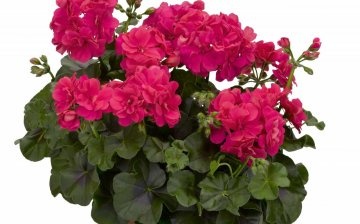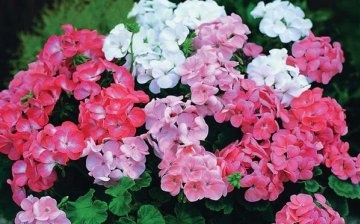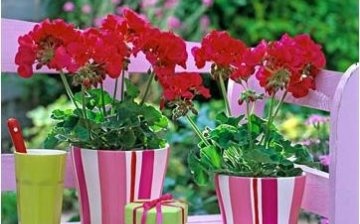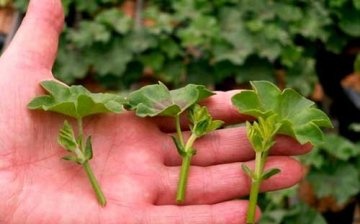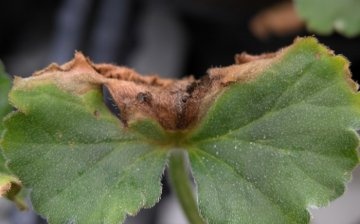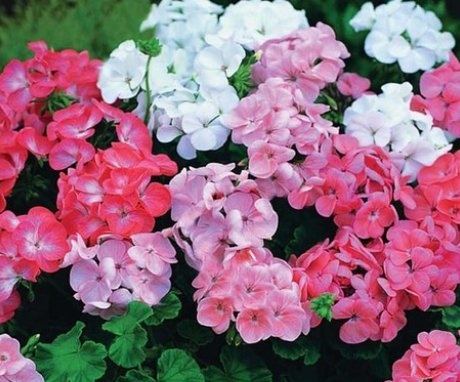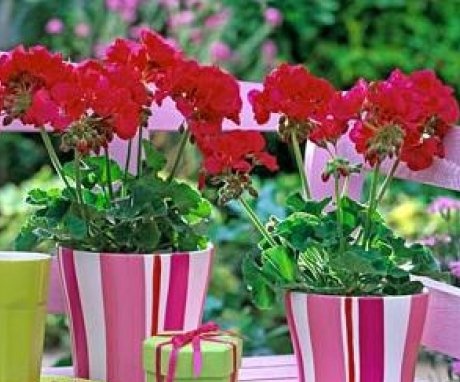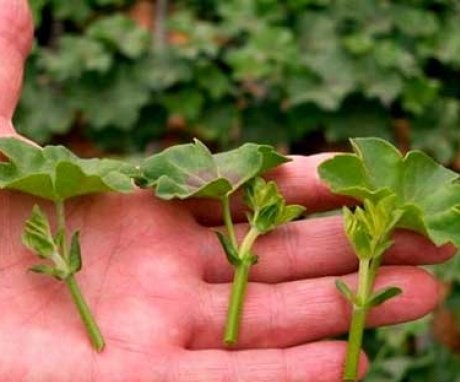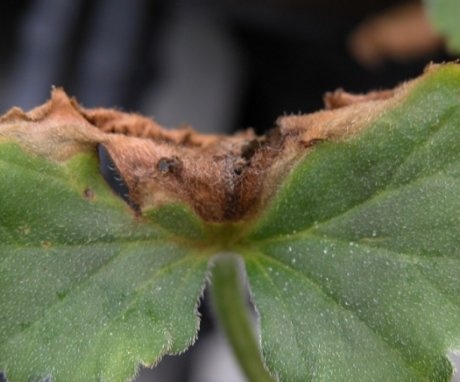How to properly care for room geraniums
Indoor geranium is a very beautiful plant that can decorate any room. This plant will look harmonious on a windowsill, bedside table, desktop, etc.
Content:
- Description of the plant
- Plant care
- Transplantation and reproduction of room geranium
- Diseases of room geranium
Description of the plant
Geranium room belongs to the category of perennial grasses or shrubs. Indoor geranium consists of:
- Root system.
- Cuttings with leaves.
- Shoots.
- Tsvetkov.
Houseplant flowers:
- It has very strong stems, which are 60 centimeters high.
- Indoor geranium leaves - dissected.
- The inflorescences of this bush are characterized by probing and are located at the tops of the shoots.
- Indoor geranium is characterized by abundant flowering.
- It starts in early spring and ends in the middle of winter.
- The duration of flowering directly depends on caring for this indoor plant.
- The flowers of this plant are composed of five round petals.
- The palette of their colors can be varied: pink, white, yellow, red, etc.
Flowers that have two colors (for example, light pink with a red dot) are very attractive.
Due to its interesting and beautiful appearance, this houseplant can take its rightful place in any flower arrangement. In addition, it has a large number of medicinal properties.
Plant care
In order to grow a full-fledged plant, it is necessary to provide it with high-quality and proper care.
- Geranium pots should be placed in well-lit areas.
- In the summer season, this plant must be limited from direct sunlight.
- In the event that in the winter time of room geranium there is not enough lighting, it is necessary to direct a stream of rays of a fluorescent lamp at it.
- This plant requires a moderate temperature. Therefore, in winter, the room should be about 10-15 degrees Celsius.
- In this case, the room should be regularly ventilated.
- In the summertime, indoor geraniums are best taken out to a balcony or loggia.
In order to ensure abundant and long-lasting flowering of geraniums, it must be planted in loose soil, which is characterized by the presence of a large amount of nutrients.
To do this, it is necessary to mix in equal quantities leaf, turf, humus and humus soil, as well as peat and sand. This indoor plant requires choose a small pot... This is due to the fact that its flowering begins only after the pot is completely filled with roots.
Indoor geranium does not require special care:
- Do not spray or water this plant frequently.
- Watering a flower in summer is done as the soil dries up, and in winter - once every 10 days.
- It is necessary to monitor the soil in the pot. It should be practically dry.
This plant requires constant feeding (once every two weeks):
- For this, potash fertilizers are used.
- If liquid fertilizers are used for this purpose, then it is necessary to choose those that contain a minimum amount of nitrogen. Otherwise, the flower will have gorgeous foliage and will not bloom.
Indoor geraniums also require annual pruning.
It is produced in the fall. From the root, you must leave a stem on which at least two leaves are located. In the event that indoor geraniums have grown strongly during the winter, then it is necessary to repeat the pruning in the spring. This process must be carried out in late February - early March.
Old stems are cut to 2-3 buds. When new buds appear, they must be pinched when 4 or 5 leaves appear. This will improve the flowering of the houseplant and increase the number of its shoots. Avoid pruning indoor geraniums from December to January. This can harm the plant.
Transplantation and reproduction of room geranium
Transplanting this plant is quite simple.
This requires:
- Take new, mineral-rich soil, pour a pot into it and place geraniums in it.
- In most cases, this plant is not needs a transplant.
- A houseplant is transplanted only if its roots have grown very much and no longer fit in the pot.
- Also, this indoor flower must be transplanted if it is accidentally very heavily flooded with water.
- As a soil for transplanting room geraniums, you can use ordinary garden soil or a universal earth mixture.
- You can make the mixture with your own hands.
- To do this, you need to take 8/10 sod land, 2/10 humus and 1/10 sand.
Cuttings are used for this process.
Reproduction takes place in late summer or early autumn. For this, cuttings are used, which must be cut from the mother plant. This element is taken from the top of the shoot. It should have at least 4-5 leaves. After cutting, the shoot must be placed in a container with water, where it is located until the roots appear. After that, it must be planted in the ground.
It is also possible to reproduce indoor geranium using seeds, but this process is longer and not so effective.
Indoor geranium takes root very well and therefore its transplant does not require special worries and overcoming various difficulties.
Diseases of room geranium
Despite the fact that indoor geranium is a very unpretentious plant, it is still susceptible to all sorts of diseases.
Most often it is houseplant is infected with viruses, signs of which are the appearance of spots and mosaic patterns on the leaves and flowers of the plant. If the flower is shriveled, then this is also a sign of a viral disease. The most common cause of this disease is propagation by viral cuttings.
Also, spots on the leaves often appear in this indoor flower.
- This disease can be caused by a variety of fungi and bacteria.
- After the leaf is covered with a stain, it falls off.
- The causes of this disease are varied: an increase in air temperature or humidity levels, as well as contaminated soil.
- In this disease, it is necessary first of all to remove the affected leaves and flowers.
A very common disease of indoor geranium is Puccini mushrooms.
- It is characterized by the appearance of brown dots on the leaves, which are popularly called "rust".
- When this disease appears, the plant must be urgently treated with a fugnicide.
A more rare disease of the room geranium is the "black leg".
- It is characterized by the appearance of rot at the base of the cutting, which gradually affects the stem of the plant and provokes leaf fall.
- If this disease is detected, then it is necessary to treat with fugnicides.
Also geraniums can suffer from fungal rot.
- Indoor plant with this disease is covered with bloom and gray spots.
- The cause of this disease is low temperature and high humidity levels.
- To carry out preventive procedures, you just need to regularly ventilate the room.
A rather serious disease is nematode damage.
- This disease affects the root, which leads to the death of the plant.
- Signs of this disease are the appearance of nodes on the root system.
- Geranium affected by this disease cannot be treated.
- Most often, she dies.
Also in room geraniums very often there is puffiness, which is characterized by the appearance of build-ups of "rust" on the foliage.
- The causes of this disease are low temperatures and poor lighting in the room.
- To combat it, it is necessary to rid the soil of excess moisture and carry out regular ventilation in the room.
The causes of geranium diseases are the wrong caring for them... In order to avoid a variety of diseases, this houseplant must be provided with full and high-quality care.
More information can be found in the video.



